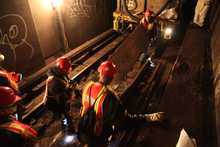Consistency Between Multiple Sites
Often, an organization has several different sites, each with its own independent maintenance department. We've seen cases where each department has been allowed to set up their CMMS however they liked...but in our experience, it's better to have all departments choose a consistent approach. Here are some reasons:
- The more information you can share, the better. For example, most CMMS packages let you write up instructions for what should be done during equipment inspections and other preventive maintenance jobs. It's a waste of time for every department to write up their own version of these instructions, especially when they're dealing with the same or similar equipment. Do it once, do it well, and share the results with everyone.
- Workers may transfer from one site to another. If all sites have similar set-ups, there's no learning curve for the transferred worker.
- Why force a lot of separate departments to reinvent their own version of the wheel? It takes foresight and planning to set up a CMMS package in a workable way. You have to examine the strengths and weaknesses of your particular CMMS software, then decide the best approach for using it in your shop. If you ask each independent department to go through their own decision process, you duplicate a lot of effort...not to mention risking that some departments may make mistakes that lead to hard-to-use set-ups. (Many maintenance people don't have the expertise to make informed judgments about using software productively.) Get your best people to figure out a good way of doing things, then have everybody adopt the same approach, rather than going their own way.
- Ultimately, management may decide to integrate the separate operations in whole or in part. For example, even if the departments remain mostly independent, management may decree that parts and materials be purchased by a single group. If the independent departments are already using the same ID codes for materials, integration will go easily; if not, you're in for major headaches.
Of course, it's not always easy to get multiple departments to agree. If you want to produce a workable set-up for your CMMS, you need a process that every department buys into. Everybody has to be on-side with the final arrangements, and has to understand why certain decisions were made. Otherwise, some departments may not have much enthusiasm for using their CMMS, leading to omissions and poor record-keeping.
What's the best way to get started? Carefully, and with commitment. We've heard of a company that asked each separate department to send one person to a "crash CMMS development program" where matters were to be thrashed out in an intensive week-long session. What naturally happened? Each department sent their most incompetent worker, since those were the people whose absence would cause the least trouble for everyone else. Things went downhill from there...
So what's the answer? Thinking ahead. Planning. Allocating enough time and resources to do a good job. Management must commit to the effort and communicate that commitment to everyone else involved. CMMS can make everyone's job easier...but you only get out what you put in.




